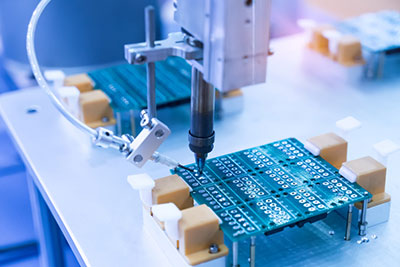Prepreg vs. Core, also known as before lamination, is the PCB’s insulating material. Designers primarily use prepreg as a bonding material. Not only that, but they also use it as an insulating material for the multilayer PCB inner conductive pattern. As a result, after the user has laminated the prepreg and extruded the semi-cured epoxy, it will solidify and it flows, binding the multilayer sheets together to form a reliable insulator.
People refer to The Core as the Core board, and also the base material for creating PCB is The Core. It has a specific double bread copper, thickness, and hardness. As such, a combination of Prereg and Core is the multilayer board.
Contents
- Prepreg vs. Core-- What Does Prepreg Mean?
- Prepreg vs. Core-- What is the PCB Core?
- Prepreg vs. Core-- The Differences Between PCB Core and Prepreg
- Prepreg vs. Core-- FR4 Prepregs in Stock
- Prepreg vs. Core-- Circuit Boards Cores in Stock
- Applications
- Multi-layered boards
- Complex PCBs
- Prepreg vs. Core-- Applicable Dielectric Constant for Core and Prereg Materials
- Conclusion
Prepreg vs. Core-- What Does Prepreg Mean?
Prereg is a dielectric material that designers pack in between a copper and a Core or between two Cores in a PCB to provide the required insulation. Prereg is simply an insulation layer. Since it can bind a copper foil and a Core, it is safe to refer to it as a binding material. Users can also modify Prereg to their needs as peculiar dielectric materials. They can also use a chemical process to transform a certain part of a Prereg into a conductive region through the combination of specific catalysts and additives.
Prepreg vs. Core-- What is the PCB Core?

The PCB Core is the glass-reinforced epoxy laminate sheets and copper traces’ FR4 layers. The Prereg binds the layers and PCB Core together when users heat the Core.
Special Offer: Get $100 off your order!
Email [email protected] to get started!
Prepreg vs. Core-- The Differences Between PCB Core and Prepreg
There are quite some differences and similarities between PCB Prepreg vs. Core. The Core is indeed one or more Prereg laminates that designers cure, harden, and press with heart. They also use copper foil to plate it on each side. According to most manufacturers, the glue that binds core materials together is the Prereg. When they stack two cores on either side of a Prereg laminate, it will expose the stack to heat. As a result, the heat will cause the resin to start bonding to the adjacent layers. Through crosslinking, the hardened resin will begin to cure gradually. Then, the following material properties will start to approach those of the core layers.
Depending on the glass weave, type of resin, and the resin content, there are differences in the dielectric constants in the PCB Prepreg vs. Core materials. When designers are embarking on developing exact impedance matching boards, this situation can be a problem. As such, the dielectric constants of the surrounding materials will determine the effective dielectric constant, as seen by the signal on a track. The fact is there are some disparities in some of the Prepreg vs. Core materials. What’s more? It becomes quite hard to predict exact dielectric constants due to the difference in dielectric constants in Core/Prereg stacks. Thus, its losses in the interconnection.
Prepreg vs. Core-- FR4 Prepregs in Stock

Prepreg vs. Core-- Circuit Boards Cores in Stock

Applications
-
Multi-layered boards
What holds the layers together is the multi-layered board of Prereg. The user will need to fuse them when they stack all the board’s layers by exposing it to high temperatures. They will then have the similarity between the overall board thickness with the Prereg thickness. When the designers use the Prereg on a multi-layered board, it must have specific characteristics. The new surface must not have excessive resin powder, cracks, foreign matter, defects, stains, or oil. It must have a smooth feel and look.
-
Complex PCBs
Engineers will probably have a more complex Prereg if they have a complex PCB. As a result, they can only achieve the needed thickness for the board and Prereg to use different types of Prereg.
Prepreg vs. Core-- Applicable Dielectric Constant for Core and Prereg Materials
Prereg and Core materials have recognizable operational variations. From a signal integrity perspective, it is essential to have a precise value for the loss tangent and dielectric constant. Designers can easily get away with their signal’s low rise time by taking value from a marketing datasheet. As a result, caution is important for the values they quote from datasheets when their analog signals or knee frequencies hit the GHz range. This case is quite essential when using impedance controlled routing or modeling interconnect behavior.
Conclusion
Prereg is a necessity and not just an essential part of the PCB manufacturing process when there are multilayers. Designers won’t have any material to hold the different layers together without the Prereg. With that, the two other parts of the PCB are the Core and Prereg. The Core has copper traces as an FR4 material. However, the Core gets its hold on the PCB through the Prereg.
Special Offer: Get $100 off your order!
Email [email protected] to get started!







